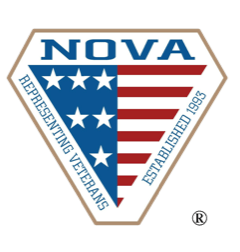Understanding the Basic Principles of Eligibility for VA Benefits
Posted by Gregory M. Rada | August 10, 2023 | Firm News
Introduction
Every benefit offered by the Department of Veterans Affairs (VA) has distinct eligibility prerequisites. However, a few fundamental criteria are common across many VA benefits programs. This blog post seeks to shed light on these basic eligibility requirements and help you better understand how the VA defines a “veteran.”

Defining a Veteran
The VA’s definition of a “veteran” hinges on three key considerations: whether a person has served in the military, whether that service was active, and the nature of the person’s discharge. For instance, active military service during a war may impact eligibility for VA disability pension. Additionally, the duration and character of active military service may influence eligibility for VA health care, education, and pension benefits.
Understanding Eligibility and Entitlement
To conceptualize the VA claims process better, it helps to break down the VA’s decision-making process into two distinct stages: establishing basic “eligibility” and then determining “entitlement” to the particular benefit sought.
“Eligibility” relates to a veteran’s overall qualification for VA benefits, whereas “entitlement” concerns the specific qualification of the applicant—be it a veteran, a dependent of a veteran, or a survivor of a veteran—for a particular benefit, assuming the basic eligibility of the veteran has been proven.
Some applicants may meet the specific entitlement requirements but fail to satisfy the basic eligibility prerequisites. This blog post focuses on the first step—basic eligibility requirements.
Examples of Qualifying Service
The first step in determining whether a person is considered a veteran by the VA involves assessing whether the individual’s experience constitutes “military, naval, air, or space service.” This includes traditional military service in one of the six branches of the U.S. Armed Forces (Army, Navy, Marine Corps, Air Force, Space Force, and Coast Guard), service as a member of a branch’s Reserve, or service as a member of the Air or Army National Guard, given certain additional requirements.
Furthermore, this definition encompasses cadets at the U.S. Military, Air Force, and Coast Guard Academies, as well as Midshipmen at the U.S. Naval Academy. Military service can even include attendance at one of the preparatory schools for these academies.
Active Service Requirement
In addition to having military service, the VA’s definition of a veteran requires that the service be “active.” Active military, naval, air, or space service encompasses “active duty” in the Armed Forces, often referred to as full-time duty. This definition can include members of the Armed Forces Reserves or National Guard who served on active duty. For example, a Reservist who was activated to serve in Afghanistan for 12 months is considered to have had active-duty service during that period.
However, it’s essential to note that for National Guard members to be eligible for VA benefits, they must have been activated for federal purposes. If a National Guard member is activated by a governor into the service of a state, for instance, to assist with flood relief efforts, that service does not qualify as “active” for VA purposes.
Conclusion
In conclusion, understanding the VA’s definition of a veteran and the basic principles underlying eligibility for VA benefits is the crucial first step in the VA benefits process. Grasping these concepts can significantly assist in navigating the path towards the specific VA benefit you may be seeking. As always, obtaining expert guidance can be beneficial to ensure your understanding aligns with the VA’s standards and requirements.







